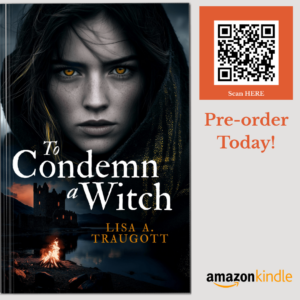Stonehenge, the Summer Solstice & the Witches Who Remember
At dawn on the summer solstice, sunlight spills between ancient stones of Stonehenge shrouded in mystery and magic. A ritual calendar. A portal. A promise.
Ever since I was a study abroad student at the University of London I’ve wanted to visit Stonehenge but my British/Welsh friends talked me out of it because visiting a pub seemed way more fun. But a few years ago I finally had my excuse – I needed to research locations in England and Scotland for my prequel “To Condemn a Witch” since my strong female wise women had Druid bloodlines.
Stonehenge wasn’t built by Druids, but by Neolithic people over 4,000 years ago. Its stones align with both the summer solstice sunrise and winter solstice sunset.
Every June on Litha, one of the sabbats on the Wheel of the Year, thousands gather at dawn on the Salisbury Plain to watch the sun rise over Stonehenge. Its stones are aligned with the rising and setting sun, suggesting deep knowledge of astronomy and the turning of the seasons. Dressed in white robes, floral crowns, or flowing cloaks, modern day Druids, pagans, wiccans, witches and tourists chant, dance, and welcome the summer solstice—the longest day of the year. Celebrations often involve bonfires, dancing, feasting, and honoring the power of the sun.
But few realize they are echoing rituals that date back thousands of years, to a time when Iron Age Druids ruled the sacred groves and believed the veil between worlds was thin. In Irish mythology bandrui—Druid priestesses and seers—were the spiritual leaders of the Celtic world. They oversaw ceremonies nearby, believing certain places—rivers, trees, and stones—held divine power. You won’t find their Celtic wisdom written because they trained people through oral tradition.
In my upcoming novel, To Condemn a Witch, the witches of the coven trace their magical roots to these ancient priestesses—the bandrui—wise women who passed their knowledge from mouth to ear, from mother to daughter. Before witch hunts drove them underground, these women served their communities as healers, prophets, and keepers of sacred rituals tied to nature and the stars.
The coven in my book doesn’t wear pointy hats or fly on broomsticks (although they might ride broomsticks in later books, because how much fun would that be???) Their magic is grounded in Scottish/Celtic folklore, Druidic ritual, and generational resistance. They mark the solstices (fire festivals), practice divination, and invoke the power of ancient goddesses like Beira, whose stories predate the written word.
When readers tell me what they love most about my novels, they often mention:
- Authentic historical settings (yes, I really visited England, Colonial Williamsburg and the Isle of Skye, Scotland!)
- Strong female characters shaped by history, not fantasy tropes
- The eerie, enchanting pull of Scottish myth—changelings, ghosts, fae, second sight and blood magic
So as the sun rises on the solstice, imagine a woman cloaked in mist, standing inside a salt circle in the Otherworld. She is both ancient and new, looking to form a coven to protect the chosen child from a witch hunter hellbent on their annihilation.
To Condemn a Witch is now on presale.
If you love stories where history meets folklore, and women reclaim the magic written in their bones, this one’s for you.

